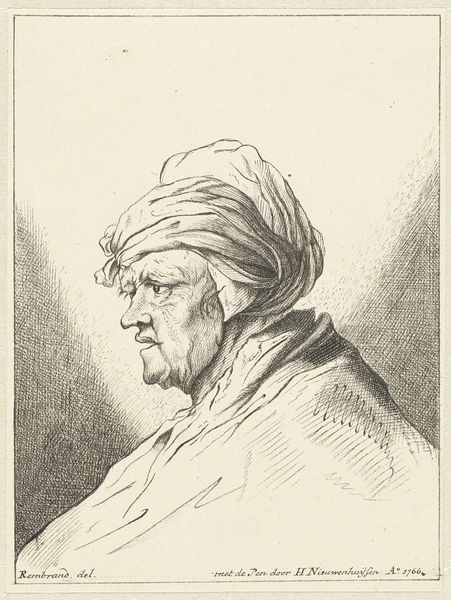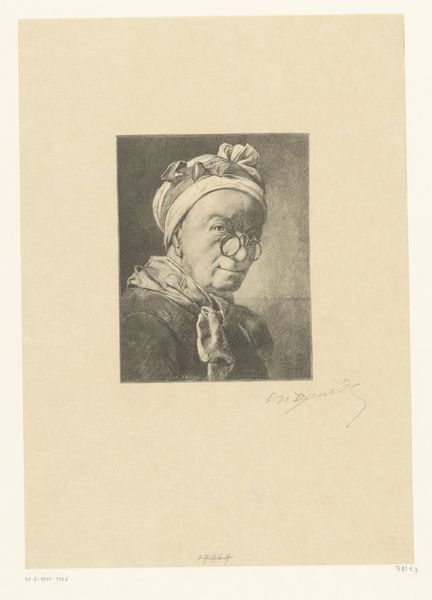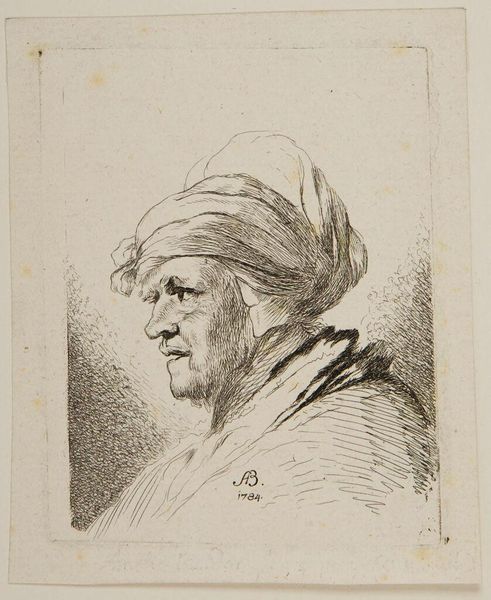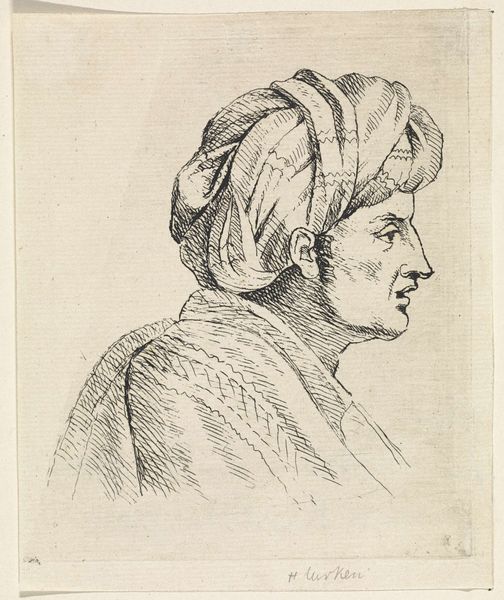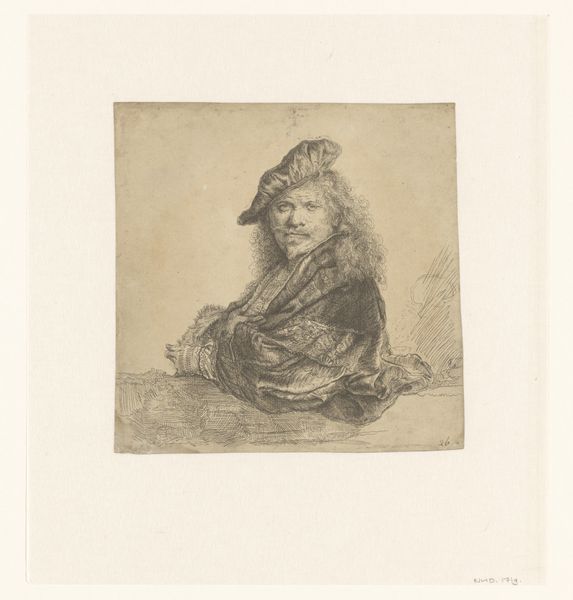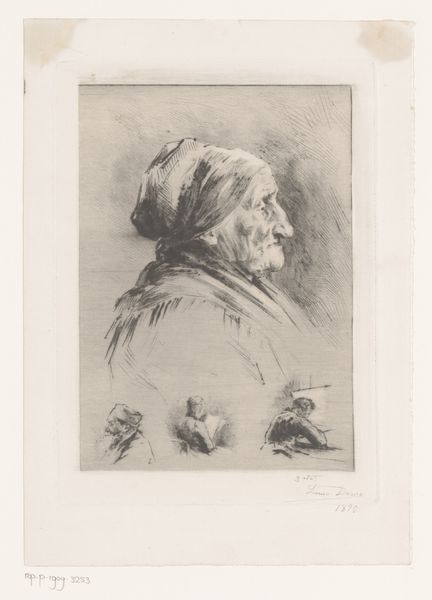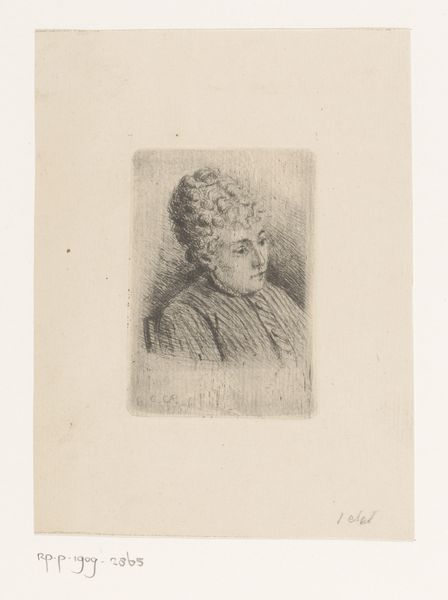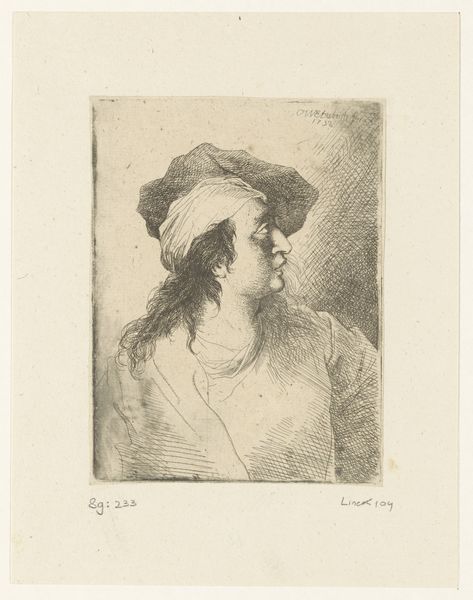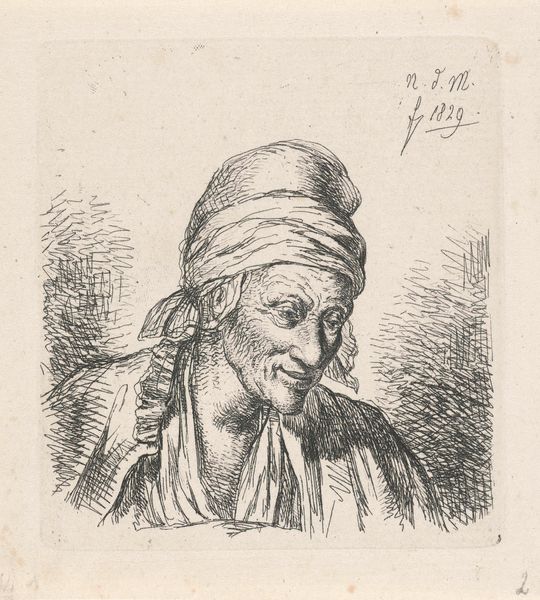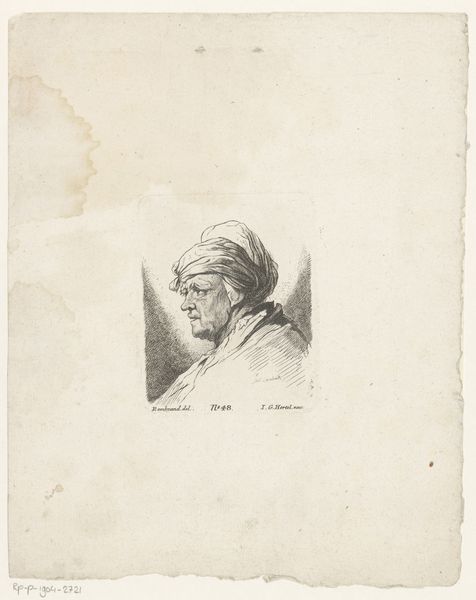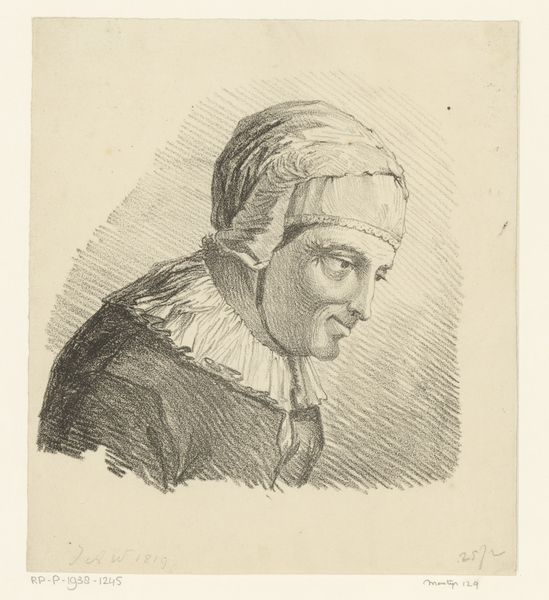
Dimensions: height 97 mm, width 76 mm
Copyright: Rijks Museum: Open Domain
Editor: Here we have "Vrouw met een doek om haar hoofd," or "Woman with a Cloth around her Head," created in 1784 by Amalie Baader. It’s an etching, so very delicate, almost fragile in its line work. What strikes me is the sitter’s determined gaze, despite the somewhat humble wrapping of her head. What do you see in this piece? Curator: The headscarf itself speaks volumes. While seemingly simple, head coverings historically carry complex socio-cultural weight, often denoting status, piety, or even rebellion. In 1784, during the Enlightenment, this woman's choice—or imposition—of such a covering begs consideration. Does it signal adherence to tradition? A personal statement of identity? It becomes a powerful symbol when contextualized within the shifting societal norms of the period. Editor: So, the headscarf isn't just an accessory, but a signifier. But what about the starkness of the etching itself? Curator: Indeed. The linearity contributes. Stripped of color and elaborate detail, the artist directs us to focus on the woman's inner world, or rather, what she wishes to reveal. The etching, in its bareness, compels a deeper look at the cultural memory embedded in such seemingly simple images, and the stories we project onto them. What do you think her gaze holds? Editor: Perhaps defiance? Or simply resignation to her station? I hadn't considered all those possibilities packed into the image itself! Curator: Exactly. It reminds us that images are never neutral. Each element contributes to an evolving, multilayered meaning that shifts with time and cultural understanding. Editor: That's a fascinating way to look at art – it definitely enriches my understanding. Thanks for opening my eyes.
Comments
No comments
Be the first to comment and join the conversation on the ultimate creative platform.
